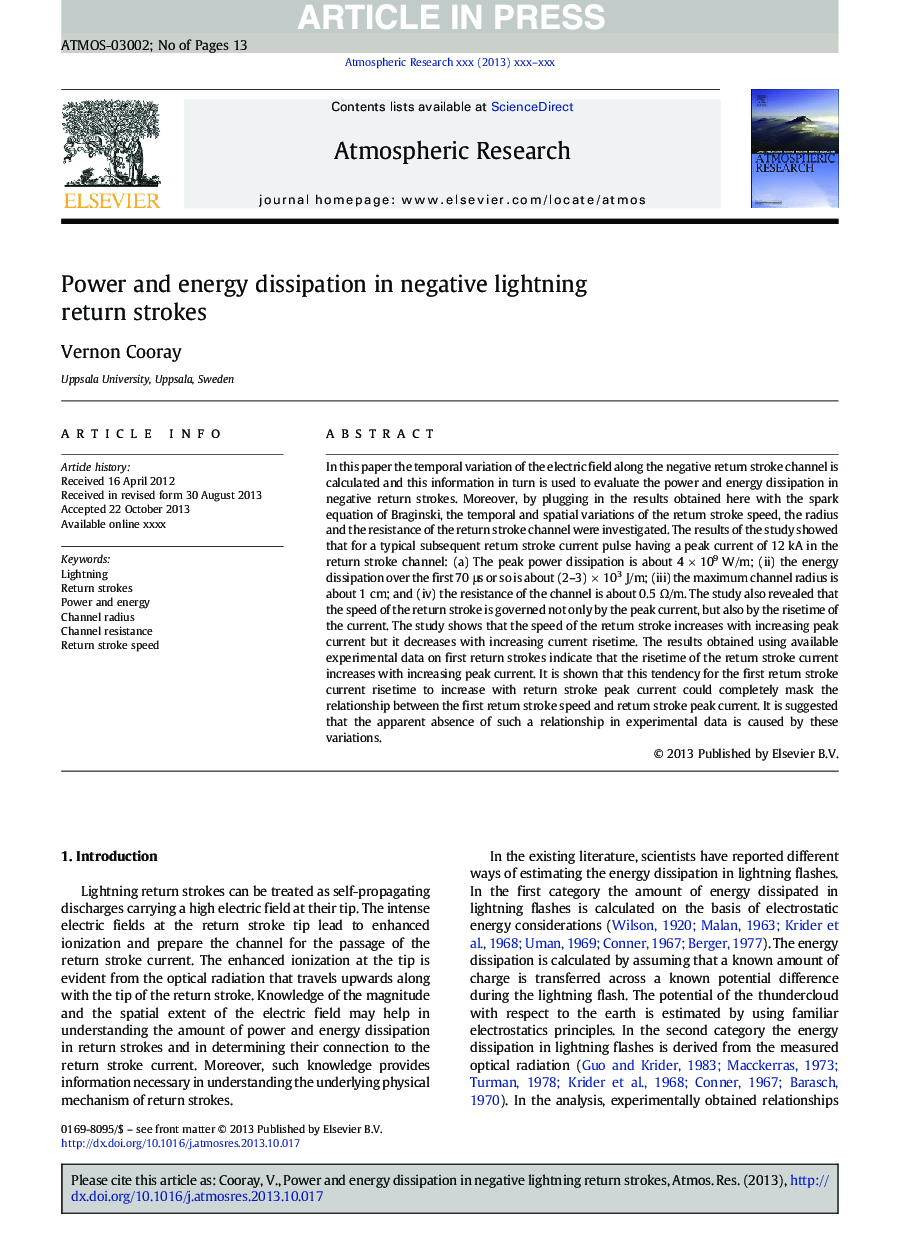| Article ID | Journal | Published Year | Pages | File Type |
|---|---|---|---|---|
| 6343508 | Atmospheric Research | 2014 | 13 Pages |
Abstract
In this paper the temporal variation of the electric field along the negative return stroke channel is calculated and this information in turn is used to evaluate the power and energy dissipation in negative return strokes. Moreover, by plugging in the results obtained here with the spark equation of Braginski, the temporal and spatial variations of the return stroke speed, the radius and the resistance of the return stroke channel were investigated. The results of the study showed that for a typical subsequent return stroke current pulse having a peak current of 12 kA in the return stroke channel: (a) The peak power dissipation is about 4 Ã 109 W/m; (ii) the energy dissipation over the first 70 μs or so is about (2-3) Ã 103 J/m; (iii) the maximum channel radius is about 1 cm; and (iv) the resistance of the channel is about 0.5 Ω/m. The study also revealed that the speed of the return stroke is governed not only by the peak current, but also by the risetime of the current. The study shows that the speed of the return stroke increases with increasing peak current but it decreases with increasing current risetime. The results obtained using available experimental data on first return strokes indicate that the risetime of the return stroke current increases with increasing peak current. It is shown that this tendency for the first return stroke current risetime to increase with return stroke peak current could completely mask the relationship between the first return stroke speed and return stroke peak current. It is suggested that the apparent absence of such a relationship in experimental data is caused by these variations.
Related Topics
Physical Sciences and Engineering
Earth and Planetary Sciences
Atmospheric Science
Authors
Vernon Cooray,
